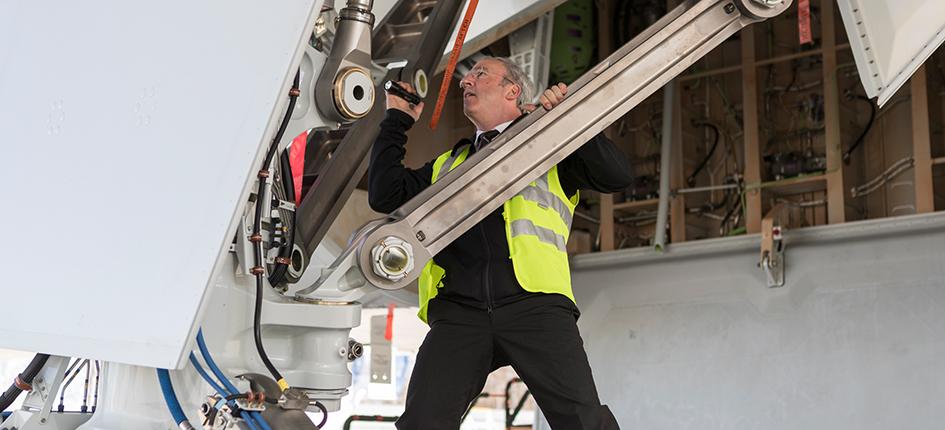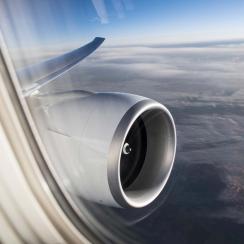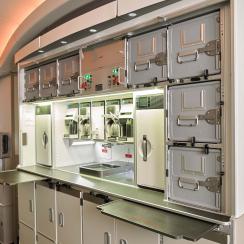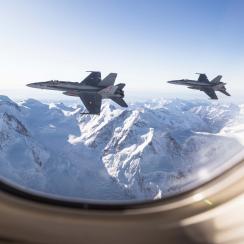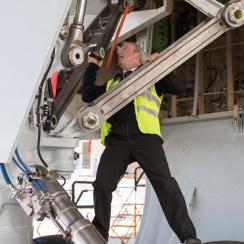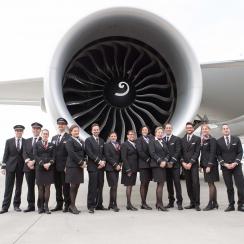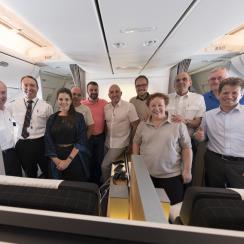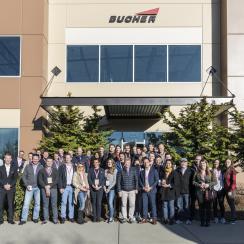Swiss realized in 2011 that a larger aircraft was needed. On many routes, the Airbus A340 with its 220 seats was reaching over 90% of its seating capacity and thus pushing its limits. With the market growing at around 7% annually and despite flying with full airplanes, Swiss risked losing market share.
New aircraft were needed with a seating capacity of 300 to 350 seats. At the time, however, there were few airplanes of that size on offer and aircraft based on new technologies, such as the A350-1000 or the Boeing 787-10, were only available from 2020. This is why the Boeing 777-300ER was chosen with its 340 seats and 25 ton freight capacity. For Beat Locher, Head Aircraft Asset Management at Swiss, it was the ideal solution: “The Boeing 777 was available for delivery from 2016 and its seriously lower costs per seat meant that we could be competitive again on even the ultra long-haul routes.” According to Peter Wojahn, chief of engineering at Swiss, technically the plane was very convincing too: “The Boeing 777 is one of the best-selling large-capacity airplanes. It has proven itself as being reliable and robust.”
Three million parts for an airplane
The Boeing 777 is manufactured in Everett, near Seattle. Boeing builds its large-capacity airplanes there in the world’s biggest building with its 13.3 million m3. 35’000 people work at the plant 5 days a week in three shifts. It takes 14 weeks to assemble a Boeing 777 from 3 million separate parts. This is a logistical tour de force because many parts arrive just in time to be processed in Everett. From Switzerland, too. Bucher Leichtbau AG, a company in Fällanden, supplies the galleys for Swiss’s Boeing 777s. And carpeting, seating materials and air cushions for the business class seats are made by Lantal in Langenthal.
Once the newly assembled airplane has left the huge assembly building, it takes another month for the handover. All systems must be tested to see that everything functions properly. After successful ground checks, the airplane is ready for its roughly three hour-long maiden flight by two test pilots and a Boeing systems operator.
A case for the Swiss delivery team
If the maiden flight runs smoothly, then Swiss can take delivery of the airplane. This is no mere formality: specialists from the flight operations, cabin and engineering departments go over the entire airplane with a fine toothcomb and note any anomalies. Checking the cabin takes the longest. Michael Klöti, steward and safety specialist, explains: “Everything, really everything in the cabin is tested: are the fire extinguishers and oxygen masks installed as per the guidelines; is the medical equipment where it should be; do the lighting, heating and on-board entertainment systems work, the refrigerators…? Can the seats be folded into all of the desired positions smoothly?”
The flight operations team comes into play during the ground check and during the maiden flight. “During the ground check, we make sure that every systems works as it should”, says Michael Gachnang, the systems operator. Afterwards, during the test flight under the supervision of technical pilot Yves Dissler, the systems are checked to see that they work in-flight. But, Dissler explains: ”we have to make sure that all the back-up systems work as well. So we turn off the main systems and check to see how and whether the back-up systems take over. That also involves flying with the emergency hydraulics and electrical systems and actually switching the engines on and off during the flight.” Once any defects have been fixed by Boeing and the documentation has been checked by the delivery team, nothing stands in the way of the transfer of title and the airplane can be flown to Zurich. And a day or two later it will already be in regular service.
Swiss took delivery of its first Boeing 777-300ER at the end of January, 2016. From mid-March, 2018 all ten of the ordered jets are in service. They have been as reliable as was expected. Says Peter Wojahn, “In 2017 every one of our Boeing 777s was in operation on average 16 hours per day. If you include training time etc. that is a huge amount!”
